by David Clarke | Nov 18, 2012 | All, Insects & Spiders, Phuket
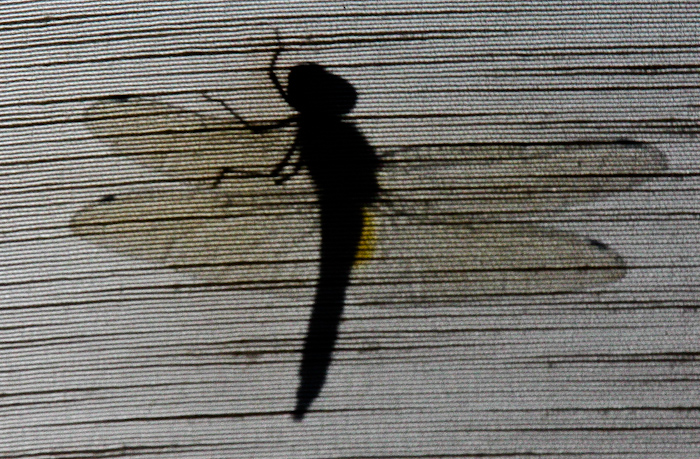
This dragonfly was playing at being a frightening fellow. He was on the blinds in our apartment in Phuket and I’m sure I heard him growl a couple of times. He agreed on a few shots in exchange for me opening the glass door behind to let him fly away to somewhere more shaded.
[socialring]
by David Clarke | Nov 9, 2012 | All, Insects & Spiders, Italy
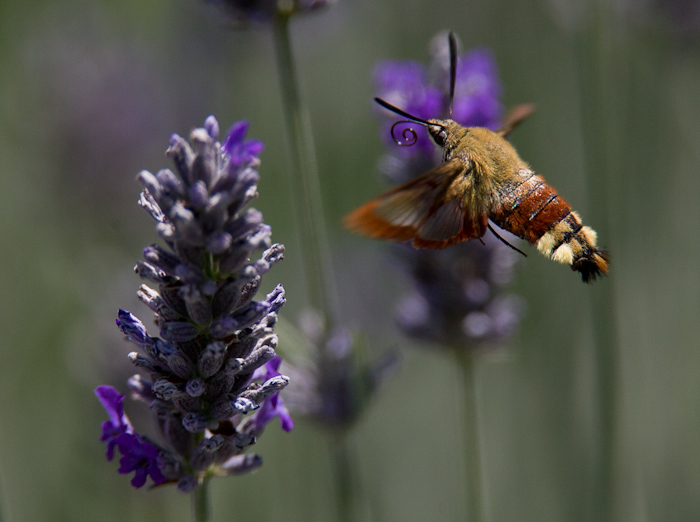
Following on from the post of a couple of days ago, a second shot of one of these busy moths.
During June and July, the lavender bushes in our garden in Tuscany are alive with the buzzing and humming of bees, beetles, butterflies and moths, all delighting in the sweet nectar.
A common visitor is the hummingbird hawk moth, and this one, the Broad-bordered Bee Hawkmoth Heparis fuciformis is also a regular.
These moths are a challenge to photograph since they are constantly on the move, darting from one flower to the next savouring the nectar, spending only a fraction of a second at any one flower.
I caught this one in mid-flight as he approached a flower. His proboscis is coiled but extended a fraction of a second after this shot was taken to collect the nectar from the lavender.
Location: countryside south of Arezzo, Tuscany, Italy.
Canon 1DMkII with a Canon 300mm IS f2.8 lens, a Canon 1.4x extender and Canon 25mm tube.
ISO 250 f4 1/3200 handheld.
[socialring]
by David Clarke | Nov 6, 2012 | All, Insects & Spiders, Italy
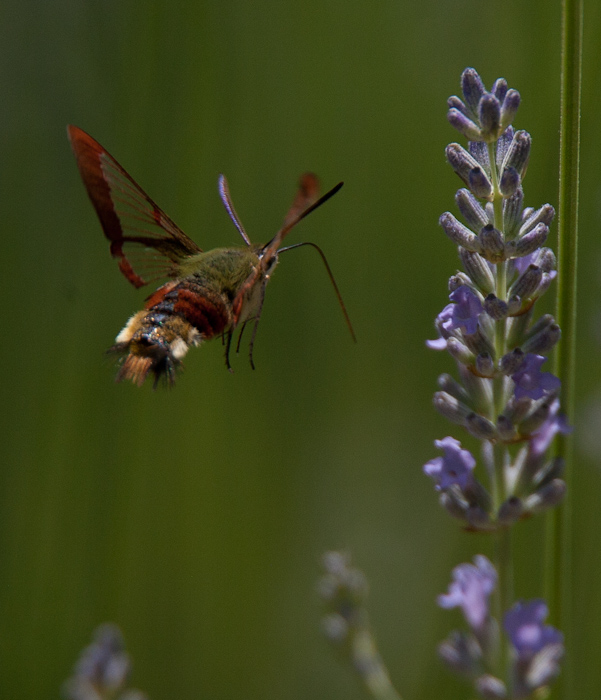
During June and July, the lavender bushes in our garden in Tuscany are alive with the buzzing and humming of bees, beetles, butterflies and moths, all delighting in the sweet nectar.
A common visitor is the hummingbird hawk moth, and this one, the Broad-bordered Bee Hawkmoth Heparis fuciformis is also a regular.
These moths are a challenge to photograph since they are constantly on the move, darting from one flower to the next savouring the nectar, spending only a fraction of a second at any one flower.
I caught this one in mid-flight as he approached a flower. His proboscis is extended and already homing in on the target – it curls up like a spring once the nectar is taken.
Location: countryside south of Arezzo, Tuscany, Italy.
Canon 1DMkII with a Canon 300mm IS f2.8 lens, a Canon 1.4x extender and Canon 25mm tube.
ISO 250 f4 1/3200 handheld.
[socialring]
by David Clarke | Oct 19, 2012 | All, Insects & Spiders, Italy
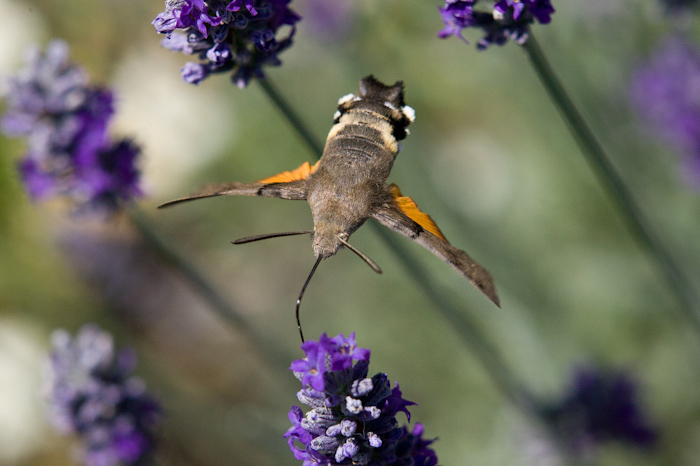
These amazing insects visit the lavender in the garden at our house during the summer months. They spend their time darting from flower to flower at incredible speed. They don’t settle on the flower but grasp it with two legs, their probosces flick out and back in a fraction of a second and then they are off to the next flower. Capturing their images therefore required a bit of patience and experimentation. I used flash for some, extension tubes and various lenses. Some of the shots remind me of old photos of military aircraft refueling in mid-air.
This one and others are also in the Showcase
Canon 1DMkII with Canon 70-200f2.8L lens at140mm and 25 mm tube; ISO400 f5 1/4000
[socialring]
by David Clarke | Oct 6, 2012 | All, Insects & Spiders, Italy

This elegant lady, a female European Mantis (Mantis religiosa), was checking me out with her 10,000 eyes on the terrace of our place in Tuscany a couple of mornings ago while enjoying the October sun.
According to Mr Wikipedia: ‘Originating in southern Europe, the European Mantis was introduced to North America in 1899 on a shipment of nursery plants. Now they are found all over the north-eastern United States and Canada to the Pacific Northwest. The European Mantis is usually 5–7.5 cm (2–3 inches) in length, and has shades of bright green to tan. It can be distinguished easily by a black-ringed spot beneath the fore coxae. It is one of several different insects for which a name used within Europe to refer to only a single insect species (in this case, “praying mantis”) has become adopted throughout the globe to refer to the larger group of insects to which that one species belongs (e.g., compare “hornet” to European hornet, or “wasp” to common wasp).
Despite being an introduced species, it is the official state insect of Connecticut.’
Although not visible in this image, the black-ringed spot was there in this insect, confirming the identification.
Canon 40D with Canon 28-70mm L f2.8L lens at 70mm. ISO200 1/250 at f10
Original RAW image cropped and processed in Lightroom
Image taken 4 October 2012
[socialring]
by David Clarke | Jul 31, 2012 | All, Insects & Spiders, Italy
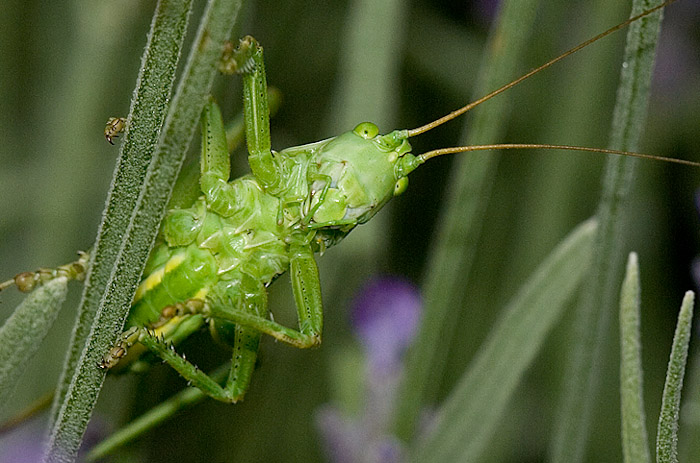
This inquisitive grasshopper was prowling the lavender, doing whatever grasshoppers do, when he spotted me and froze. Perhaps he was checking out the long lens.
Canon 1D MKII with Canon 300mmL f2.8 IS lens and Canon 12mm tube. ISO 200 1/200 at f8
[socialring]








